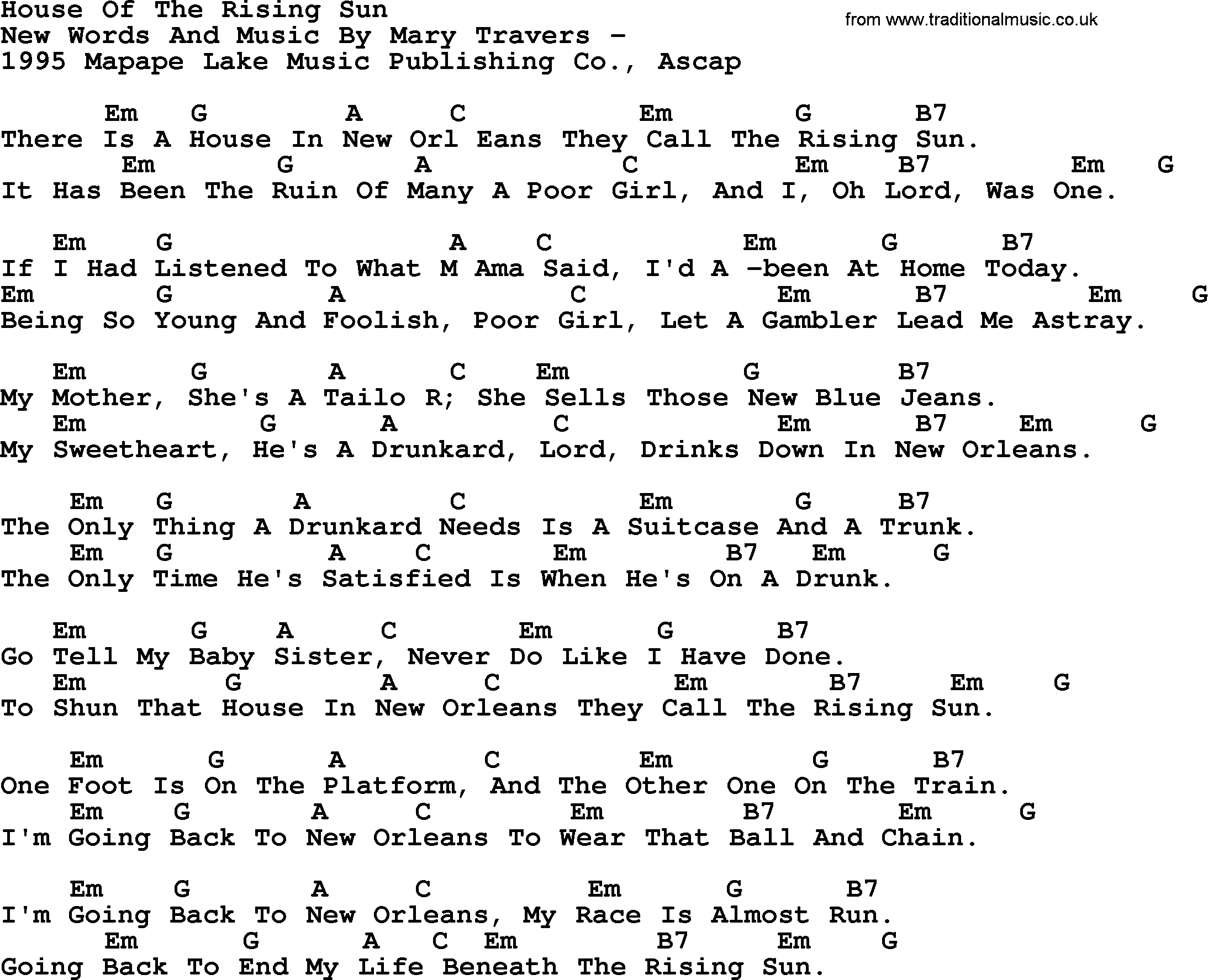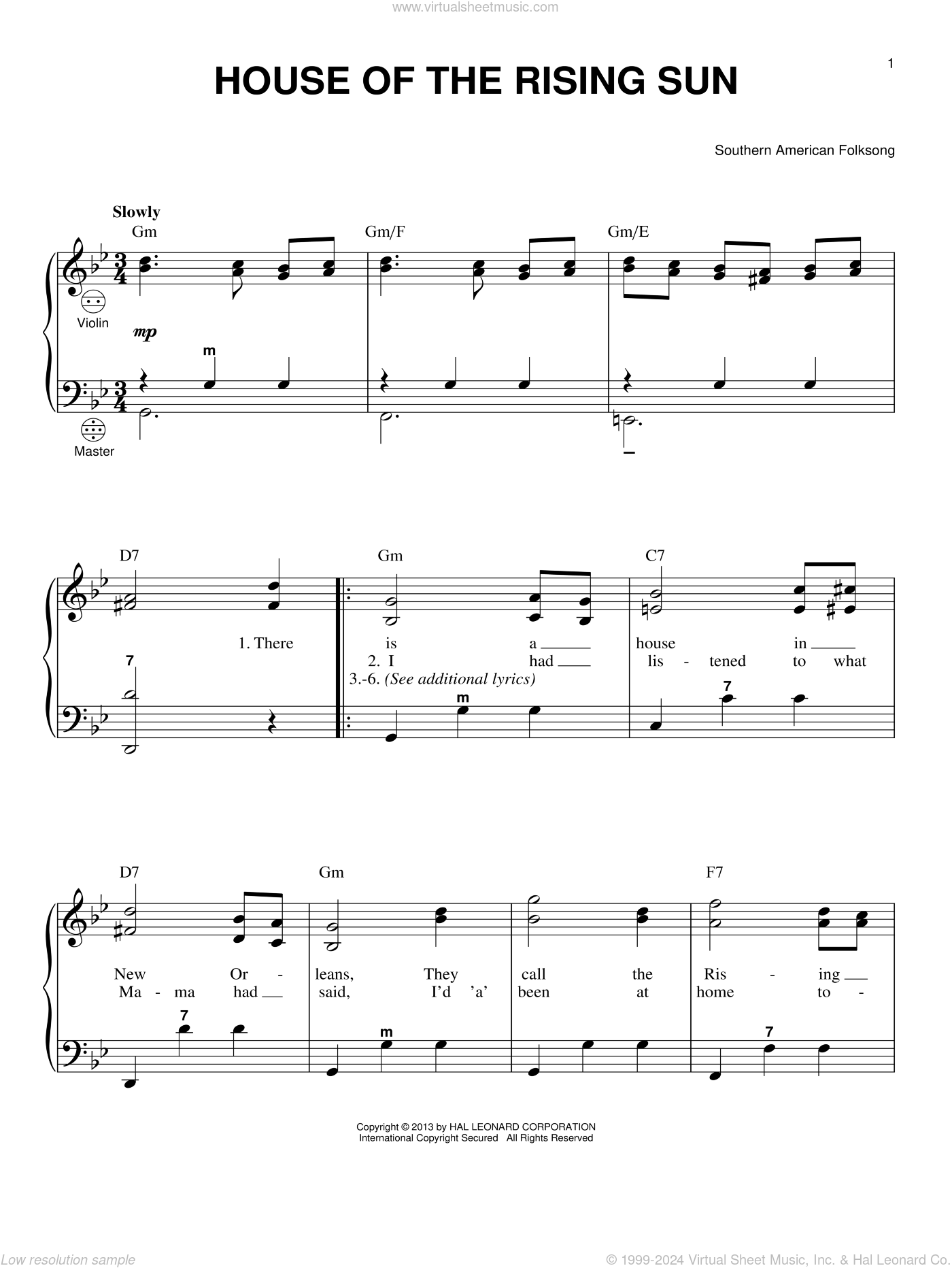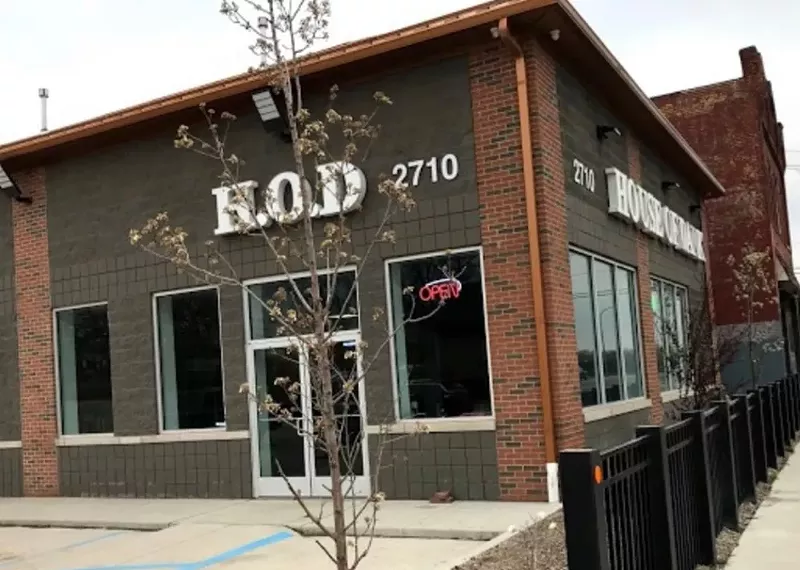Table Of Content

The song tells the haunting tale of a person’s downfall and subsequent ruin in the infamous House of the Rising Sun. The lyrics paint a vivid picture of a life consumed by vice, sin, and despair. It speaks of a place of ill repute, a den of iniquity where the protagonist’s life takes a turn for the worse. The House of the Rising Sun serves as a metaphor for a place of temptation and moral corruption. Many believe that this points out to a brother in New Orleans, where the song was supposedly named after the occupant Madame Marianne LeSoleil Levant, which meant Rising Sun in French.
What Is the House of the Rising Sun?: An Introduction to the Origins of the Classic Song
Dave Van Ronk and Bob Dylan played “House of the Rising Sun” in coffeehouses. Burdon himself picked the song up from the English folk scene, and the Animals first covered the slow, sinister tune when they opened for Chuck Berry because they knew they “couldn’t outrock” the guitar great. Eric Burdon and the Animals, who popularized the song worldwide when they recorded and released it in 1964, didn’t know. Many have sung “House of the Rising Sun” before Eric Burdon took it on with the Animals, and many will sing it in the future. Its psychological insight and philosophical meaning are all too relevant for this song to be anything but timeless. But it’s hard to imagine that anybody will ever again inhabit that doomed soul at the epicenter of the tale quite as well.
The Song The Cure’s Robert Smith and Boris Williams Created in Two Days for ‘The Crow’ Soundtrack: “Burn”
Male singers made it “the ruin of many a poor boy,” which transformed the title establishment into a gambling den. There are far too many versions of “House of the Rising Sun” to list them all. But, a few notable recordings are Leadbelly from 1948, Joan Baez from 1960, and Bob Dylan from 1962. Both the Joan Baez and Dylan versions were included on their first albums, which were both very folk-oriented. Most likely, the song in its original form was a folk song from the UK.
Rock

Colombian band Los Speakers covered the song under the title "La Casa del Sol Naciente", in their 1965 album of the same name. In 2014, Five Finger Death Punch released a cover version for their album The Wrong Side of Heaven and the Righteous Side of Hell, Volume 2. Five Finger Death Punch's remake reached number 7 on the US Billboard Mainstream Rock chart. The single also charted in Australia (number 14), France (number 36), and Italy (number 54). The song was first collected in Appalachia in the 1930s, but probably has its roots in traditional English folk song.
Although the date and author of the song are unknown, some musicologists have said that it resembled ballads of the 16th century, and could very easily have derived from one of that time. As a popular folk song, the oldest record of “House of the Rising Sun” in reference to a song was 1905, and it was first recorded in 1933 by an Appalachian group. Other early recordings include Woody Guthrie’s version from 1941 and Bob Dylan in 1961. The version by the Animals, however, is by far the most popular, and Dylan is often annoyed when it is assumed that he covered that song from them.
'The House of the Rising Sun': The Hit Rock Song With Folk Origins - Wide Open Country
'The House of the Rising Sun': The Hit Rock Song With Folk Origins.
Posted: Fri, 29 Jul 2022 07:00:00 GMT [source]
Old Time Music is proud to have such a passionate and talented team of writers who share their love for music with our readers. We hope you enjoy the articles and insights they bring to our platform. This is a song that is instantly recognized by those first seven or eight guitar notes. And it is a song that has become more than special in the history of Rock and Blues Music.
Popular Rock Bands Whose Biggest Hit Is a Cover
The use of light and shade and a progressive atmospheric build was innovative. Those vocals, and the essential organ part from Alan Price, lifted this song way above anything else at the time. Eric Burdon heard this song sung in a Northeastern folk club and brought the song to the group as a suggestion.
Written and Recorded
By the time the ’60s rolled around, the folk legend Dave Van Ronk included an intense take on “House of the Rising Sun” as a steady part of his live repertoire. His young acolyte Bob Dylan largely mimicked Van Ronk’s arrangement of the song and included it on his debut album. Across the pond at around the same time, Burdon apparently heard the song from a local folk singer in England. Burdon brought it into the Animals, who electrified the song for their 1964 self-titled debut album.
Great Recordings
That release had no songwriting credit, but the liner notes indicate that Dylan learned this version of the song from Dave Van Ronk. In an interview for the documentary No Direction Home, Van Ronk said that he was intending to record the song and that Dylan copied his version. Van Ronk recorded it soon thereafter for the album Just Dave Van Ronk. It creates an atmospheric and haunting mood, drawing the listener into the world of the song’s protagonist. The lyrics, combined with the haunting instrumentals and Jim Morrison’s emotive vocals, establish a dark and introspective atmosphere throughout the track.
Furthermore, it seems that the song has been in existence for at least three hundred years. It has been known under a variety of names and has also switched genres. In some versions, it is about a woman who is returning to prostitution. In others, a man sings the narrative bemoaning his inability to let go of his sordid past, which includes drink, women, and gambling. One thing for certain is that the original version of “House of the Rising Sun” had nothing to do with New Orleans. The first people to sing it had probably never even heard of New Orleans.
The tragedy of “House of the Rising Sun” is that the narrator seems to have lost his free will. He knows that the house will be his damnation, yet he is en route while he is telling his sad story. At the very least, he tries to use his example to save others—Oh mother, tell you children not to do what I have done. And maybe he even hesitates for just a moment before committing to his return, Well, I got one foot on the platform/The other on the train. On "Life Is A Highway," his burgeoning solo career, and the Rascal Flatts song he most connects with. The original "Enter Sandman" lyric was about crib death, with the "sandman" killing a baby.
The song has its roots in traditional folk music and has been passed down through generations. The earliest recorded versions date back to the 1930s, and it has since been covered by numerous artists in various styles. House of the Rising Sun played a significant role in establishing The Doors as one of the leading bands of their time. It showcased their musical versatility and ability to put a fresh spin on a traditional song. The Doors’ version became one of their signature songs and helped solidify their place in rock music history.
As a final note, the legacy of House of the Rising Sun lies in its ability to transcend time and connect with audiences on a deep emotional level. Its enduring popularity is a testament to the timeless nature of music and its power to evoke emotions and tell compelling stories. It is a great song for them to perform, but it wasn’t the only one that raised the roof. There were only two singers that could do that and make it work so well. “House of the Rising Sun” went to #1 on both sides of the Atlantic and was the first major Folk-Rock success.
Stone Temple Pilots bass player Robert DeLeo names the songs that have most connected with fans and tells the stories behind tracks from their Tiny Music album. "Your Time Is Gonna Come" became the first Led Zeppelin song to be covered when Sandie Shaw recorded it in 1969. Famous Yugoslav singer Miodrag "Miki" Jevremović covered the song and included it in his 1964 EP "18 Žutih Ruža" (eng. "Eighteen Yellow Roses"). "House of the Rising Sun" was not included on any of the group's British albums, but it was reissued as a single twice in subsequent decades, charting both times, reaching number 25 in 1972 and number 11 in 1982. While there is no specific true story behind the song, House of the Rising Sun draws inspiration from the themes and experiences common in the world of addiction, regret, and lost opportunities.
He is tempted not to go but hasn’t got the willpower to say no, almost like he has given up on himself. A song that, when you try to get to the bottom of what it is all about and where it came from, asks more questions than it answers. The meaning behind “House of the Rising Sun” by The Animals is one such song.











